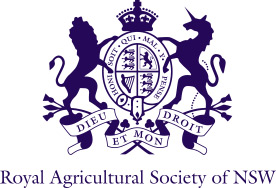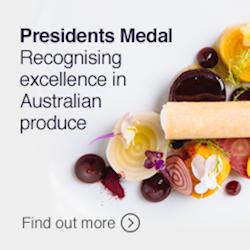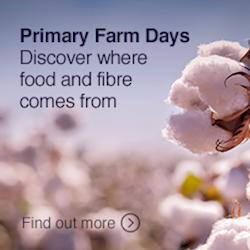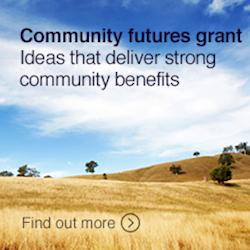Explore our history
In many ways, the history of the Royal Agricultural Society of NSW echoes that of the nation’s history more broadly. The social, political, economic and climatic conditions of each passing era have all left their marks on the RAS and influenced its activities. So when you explore our story, there’s a good chance you’ll find something that throws a light on Australia’s many stories too. From its earliest beginnings at Parramatta, Burrumada, to the present day, the RAS has endured by responding to – and encouraging – change.
'Agriculture is the great art of directing and aiding nature in the performance of those functions which were designed by Providence for the comfort and assistance of man.'
- Lewis Cass
1822 – Parramatta, Burrumada
Background and Beginnings
In 1788 when the First Fleet sailed into Sydney Harbour, it was not primarily to establish a gaol but a colony. Described as one of the most striking social and penal experiments in history, the British government’s ultimate objective was to turn felons into farmers. On completion of their sentences, convicts were to be granted land and given tools, seed, and rations in the hope they would become independent.
The experiment was a success. By 1795 the fledgling colony was able to feed itself comfortably, largely thanks to the efforts of those who had settled on the rich river flats of the Hawkesbury-Nepean, a river system known to Aboriginal people as Dyarubbin. Settler progress came at the further expense of Aboriginal people, however, whose land the colonists continued to overtake – with long-lasting and devastating consequences.
Throughout Australia, Aboriginal people had successfully managed use of native plants and animals for sixty thousand years or more, curating the landscape to sustainably suit their needs. In some areas Aboriginal people helped the colonists by guiding them through Country, locating water sources, providing food, and sheets of bark for building. Other groups resisted invasion fiercely.
Changed conditions in Britain at the end of the Napoleonic Wars (1803-1815) resulted in a population boom in NSW as convict transportation surged and a few ex-military personnel with a little capital behind them arrived to try their luck as free settlers. Local demand for animals and produce increased, and entrepreneurial types saw new opportunities. If exports like wool and horses could be found to fill the holds of returning ships, the colony might prosper.
Ex-convict farmers who hoed their small, stump-dotted paddocks and let their cattle and pigs run in the bush had provided well for the colony up to this point, but it seemed unlikely they could meet the demands of the future.
5 July 1822
Recognising the need for improved farming methods, a small group of Sydney gentlemen met in 1822 at the home of Edward Wollstonecraft to discuss the formation of an agricultural society. On 5 July they convened a larger, more representative meeting at the George Street shop of watchmaker James Robertson. It was here that the Agricultural Society of New South Wales was formally born. At the gathering
- office bearers were elected
- a prospectus was agreed
- an annual subscription fee was fixed at five guineas
- a fund was established to import quality breed stock and farming textbooks from Great Britain
At a final meeting on 16 July at Charles Walker’s Red Cow Inn at Parramatta, rules were finetuned and a celebratory dinner followed. The new patron of the Society and guest of honour, Governor Brisbane, addressed the assembly, promising government assistance and a grant of land near Parramatta for an experimental farm.
'An Annual Shew of Stock, and Exhibition of Samples of Wool, Seeds, Implements, or any other Articles tending to the Improvement of Agriculture, shall be held at Parramatta, on the first Wednesday in October, to be open to the Public, for Premiums to be given as a Reward for Improvement or Superiority, in such manner as the Society may, from time to time, offer and direct.'
- Prospectus of the Agricultural Society of New South Wales, instituted on 5 July 1822
1823
The First Show
The first Show was held on 3 October 1823 at Parramatta. It was timed to coincide with the half-yearly Parramatta Fair, where colonists customarily brought stock to sell and stud animals for appraisal. Exhibits were probably displayed at the market or in the courtyard of Walker’s Inn.
Early in 1823, notices in the newspaper listed categories in which generous prizes of silver plate and cash would be awarded, allowing plenty of time for entrants to prepare. Importantly, competitions were open to all settlers and their servants, whether members of the Society or not.
Judges assessed the exhibits and prizes were given out at the Society’s noon meeting. During the meeting, Edward Wollstonecraft presented a model of a new type of cultivator and explained its workings. Practical demonstrations have been a feature of the Show ever since.
'…[T]he public spirit of breeding and grazing appeared this day to be practically influenced by the encouragement and example of the Agricultural Society.'
- The Sydney Gazette and New South Wales Advertiser, 9 October 1823
Success
The success of the first Show is perhaps best gauged by advertisements that appeared the following year, advising that the sire of the two prize-winning horses was standing at stud – the first example of a Show win being used for endorsement.
Show Day as a not-to-be-missed event quickly caught on.
Early Shows provided people with an opportunity to learn from peers, but from the outset they were also more than this. They were an important coming together: a highly anticipated and much enjoyed social occasion. Consequently, they also attracted those who had wares to sell, or who offered additional entertainments and diversions.
1828 - 1834
Drought and decline
Severe drought in 1828 and 1829 saw the gradual decline of the Society, and finally an end of the Shows and annual dinners. In 1834 the Society’s experimental farm was sold and the Society faded from view.
1859
Revitalisation
From 1836 onwards, numerous other district or specialist agricultural societies were formed and held meetings and shows, but in 1857 the Cumberland Society was founded and became preeminent.
In 1859 this group renamed itself as the Agricultural Society of New South Wales, taking on the mantle of the leading agricultural organisation in the colony. The Society was back, with all its old guiding principles and ambitions intact.
Shows and ploughing matches once again became regular events, held on the fifteen acres of land the Society was granted, at what is now Parramatta Park.
Search our Museum
Something to add?
Do you have an artifact or story from
RAS NSW history to add?





